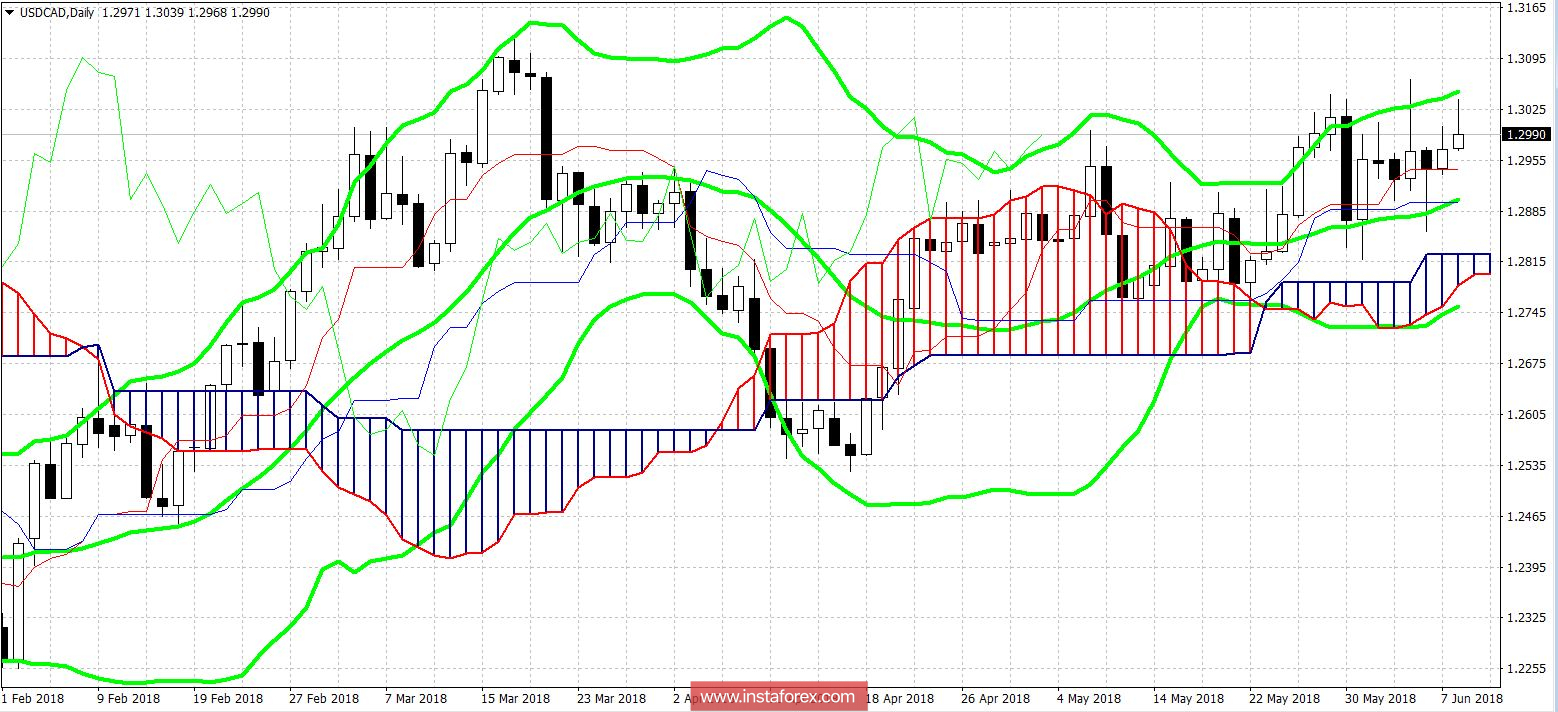The Canadian dollar paired with the US currency is noticeably weaker and has already tested the 30th figure today. The cause for the next upward impulse was the rather uncertain data on the Canadian labor market. The unemployment rate for the fourth month in a row stands at 5.8%, but the number of employees continues to decline: in May this indicator fell by 7.5 thousand.
However, the weak dynamics of the Canadian labor market is not the primary reason for the weakening of the "loonie". Traders are again alarmed by the vague prospects of the North American Free Trade Agreement (NAFTA). Negotiations on the revision of this agreement lasted almost a year, but the parties still can not come to a compromise option. Representatives of the negotiating team have consistently reported progress, however, "it's still there".
According to the Canadian media, in May the countries have almost reached a compromise: the updated agreement was already ready, but it did not please U.S. President Donald Trump. Journalists were not able to find out which points of the deal the US president did not agree with. But the fact is that he made his amendments to the document and, in fact, "put an end to" the agreements reached: the proposed changes were not liked by the Mexican side, after which the negotiation process returned to the starting point. Later, one of the White House advisers reported that the head of state is extremely negative about "collective" agreements, preferring to negotiate separately with Mexico and separately with Canada.
This position was confirmed recently by Donald Trump himself, calling the us membership in the WTO and NAFTA "disaster". He was confident that the conditions and demands created within those organizations were unfair and disadvantageous to the United States. And if the issue of WTO membership (yet) is not discussed, then Trump was ready to leave NAFTA a few months ago. However, after the dialogue with the Canadian Prime Minister, he decided not to rush with the actions and gave time for additional dialogue.
Last week, the Canadian foreign minister arrived in Washington for regular tripartite talks. But a few days later it became known that this round also ended in failure. The White House invited Canada to conduct separate bilateral negotiations "US-Canada" and "US-Mexico". Canadian Prime Minister Justin Trudeau rejected the idea, saying that the most benefits for the country are obtained only in the trilateral format of cooperation, so he will continue to uphold this position. The reaction of the White House to the words of Trudeau was predictable. Today, before departing for the G7 summit, Trump repeated his intention to withdraw from the NAFTA - "if the parties still can not agree". Given the fact that fruitless negotiations have lasted almost 10 months, the probability of such a scenario is quite large.
The uncertainty around NAFTA is an irritating factor for traders of the usd/cad pair. This is a kind of "fly in the ointment", which affects the vector of price movement. After all, the Canadian economy as a whole demonstrates a good dynamic, and the Bank of Canada at the last meeting took a "hawkish" position, changing the wording of the accompanying conclusion. The growth of the oil market also made it possible to talk about further tightening of monetary policy, despite a slight slowdown in Canada's GDP in the first quarter of this year.
However, Trump's actions with regard to NAFTA may affect the resolve of the regulator's members. The Bank of Canada has repeatedly emphasized the uncertainty surrounding this agreement, warning of a decrease in the country's investment attractiveness. If the US president still realizes his intentions (which is very likely), the Canadian central bank may postpone the issue of raising the rate for a later period, while the market's expectations now relate to the July meeting.

From a technical point of view, there are all the prerequisites for re-testing the resistance level 1.3050 (a breakthrough is still in doubt). On the daily chart, the price is between the middle and top lines of the Bollinger Bands indicator, whose lines show an extended channel. Indicator Ichimoku Kinko Hyo formed one of its strongest signals - a bullish "Line Parade". In addition, the pair is located above the cloud Kumo, which also indicates the upward direction of the price. Buying can be made from current marks, but it is more expedient to wait for the downward retreat to the base of the 29th figure, especially if the market allows it to be done against the background of the uncertain dynamics of the US dollar index.
The support level is the price of 1.2890 - this is the middle line of the indicator Bollinger Bands, which coincides with the line Kijun-sen. If the price is fixed under this mark, the upward scenario will lose its relevance. However, given the general fundamental background, in the near future this is unlikely.





















